Interworx vs. cPanel: Part 2
- Interworx vs. cPanel: Part 1
- Interworx vs. cPanel: Part 2
- InterWorx vs. cPanel: Part 3
In the second part of our review, we will be looking at the Web Server, FTP Server, SSH Server and lastly the Mail Server sections of the InterWorx main menu and comparing them to the available options in WHM. Let’s start with the System Services menu.
InterWorx System Services

Here we can see the main System Services sections:
- Web Server
- FTP Server
- SSH Server
- Mail Server
Let’s start by reviewing the Web Server info area.
WebServer
When we click on the Webserver menu link, the section below opens and shows the status of the web server, as well as giving you the ability to stop, start and restart the service. Additionally, there are options to refresh the PHP-FPM cache, restart the PHP-FPM service, and provide more web server information including multiple server log view options, an Apache server status page, and server info.
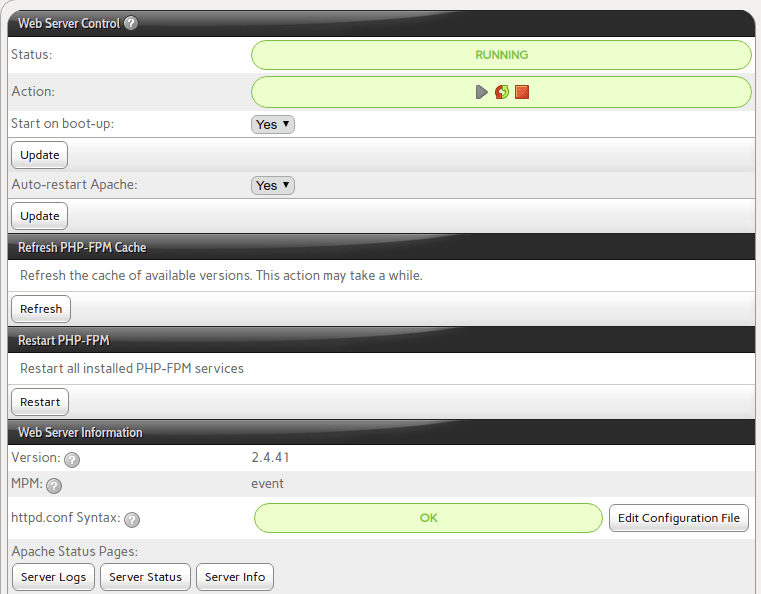
On the right, an HTTP graph shows the currently active web server clients connected to the server. Also, if you hover your mouse over the graph, a small pie chart icon will appear. Clicking this icon will show you the daily, weekly, monthly and yearly average of VPS web server clients that have accessed the server.

In the section below, we have the Web Server Options which are actually the preferences contained within the apache.conf file. Below that is the PHP Integration Mode, where you can set either PHP-FPM or mod_suphp.

This section below shows the list of dedicated cloud server hosting modules available on the server and their statuses.

Next, we have our PHP settings area. This area denotes the PHP versions available for new SiteWorx accounts. Disabling a PHP version only removes it from the list – it will still be installed, and any domains currently using it will continue. Also, the default PHP version can be set in this area. This version will be pre-selected when creating new SiteWorx accounts.

WHM System Services
WHM breaks up many of the same services and server configuration as InterWorx into three main groups:
- Server Configuration
- Service Configuration
- Software
Granted, the controls are more granular in places, and the same functions are all present with the addition of a few other options like Statistics Software Configuration, Terminal, Tweak Settings, and Update Preferences.
Server Status


Server Configuration


Service Configuration


FTP
InterWorx FTP Server
In the image below, we see the FTP Server controls, FTP Server Information and SFTP Server Information. This table shows the status of the FTP server and allows you to stop, start or restart the FTP server. The service version of the FTP server installed on this system is noted as well. The next area allows you to edit the FTP config file and will tell you whether there are any syntax errors in your proftpd.conf file after the edits are made. If there are, you can click on the Details link to see where the problem lies.
In the SFTP section, our first option identifies the port that SFTP uses to connect. We then have the ability to limit the login attempts before the user is disconnected. This area also shows the current status of the SFTP engine and allows the service to start and stop.

Next, we see the FTP Users Graph. This identifies the number of users that have connected via FTP to the server.

Below this, we see all the FTP server options available.
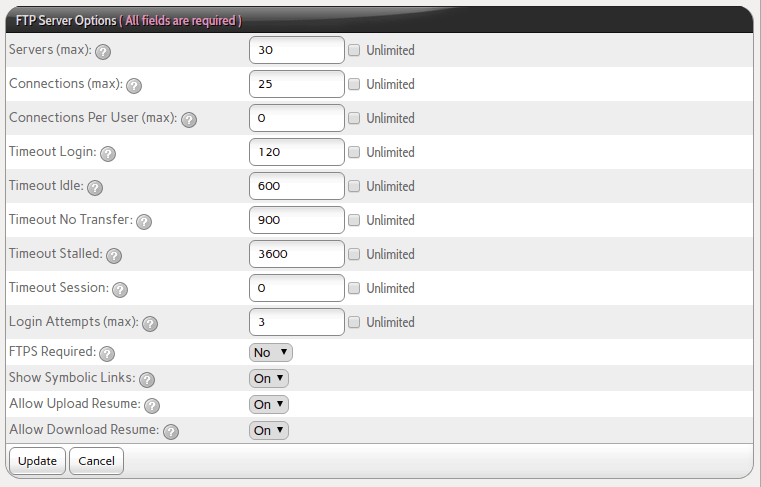
And finally, we see the number of current FTP sessions on the bottom table.

WHM FTP Options
These two sections define the FTP server type used and the FTP configuration settings.

SSH
InterWorx SSH Server
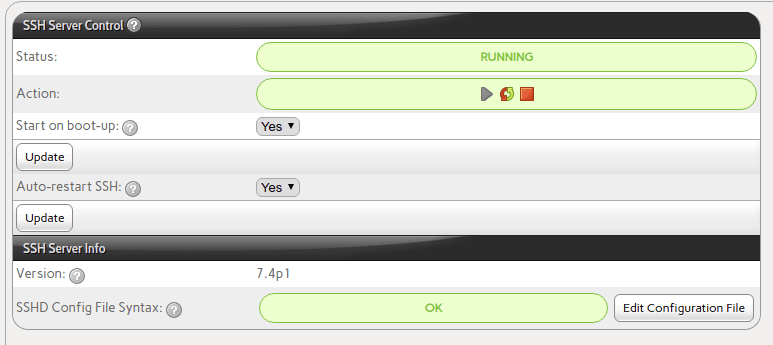
The table above shows the status of the SSH server and allows you to stop, start, or restart the SSH server as well as the SSH version and option to edit the /etc/ssh/sshd_config file.


The above images show the other SSH server options, info, and current shell users.
WHM SSH Options
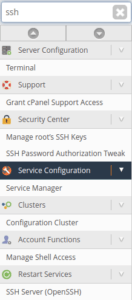
InterWorx EMail
The InterWorx EMail options are located within the System Services folder and have a well-apportioned layout that makes it extremely simple to oversee all of the server’s email options and functions.
Below, we see the Primary SMTP Server Settings, Alternate SMTP Server Settings, MTA Server Options, and the MTA Bounce Message Options sections. In each of these areas, the primary user has the ability to view, update, or modify the functionality of the email server.
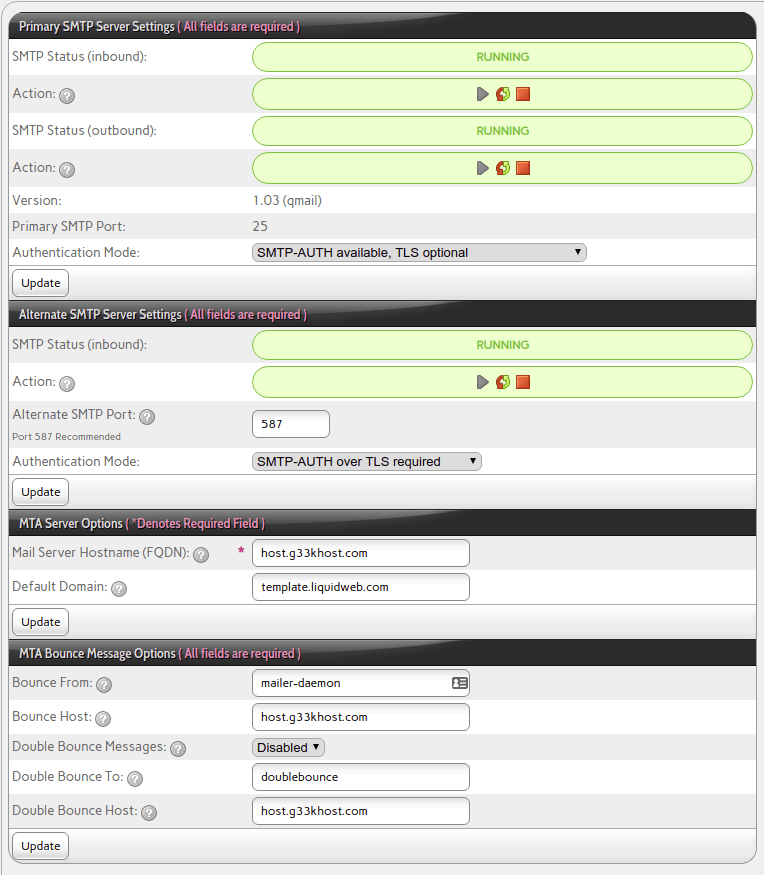
In the section to the right, we see the Mail Queue monitor, the MTA SMTP Options for inbound email and below that, the settings for the MTA SMTP Options for outbound email. In these areas, we can control the overall flow of mail into and out of the server, limit connections, limit size, blacklist email addresses as well as modify our real-time SBA Blacklists.

In the MDA Setting page below, we can see the MDA Server Control for pop3, pop3-SSL, IMAP, and IMAP-SSL. Farther down, the status of Dovecot can be monitored as well as stopped, started, or restarted. Below that, we see the version of Dovecot, the protocols used, connection limits as well as SSL options and the cipher suite utilized. Any changes to these settings can be applied immediately by clicking the Update button.

In the Spam Filtering section, we have the option to set up, modify, and monitor Spamassassin’s settings. We can also see the version of Spamassassin installed as well as set up the level of scanning, modify the SpamAssassin score threshold (the point at which the SMTP server will reject a message before local delivery begins) and configure the reporting options.

On the same page in that section, we can add an email to the global whitelist, global blacklist or add a trusted network. Right below these choices are Spamassassin’s Bayesian Scanning Options which allows for auto-learning and IMAP training to aid in the improvement of spam filtering.

Finally, at the bottom of the page, we see the advanced Spamassassin options and preferences. There are many, many options that can be implemented here to customize how spam is noted and identified.
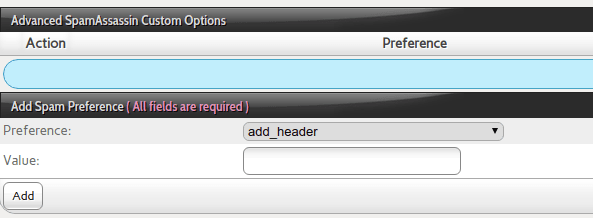
WHM Email
WHM maintains all of the same functionality built into InterWorx but the functions are more spread out into the following sections:

The main area for WHM’s email settings is located within the Exim Configuration Manager section. Here we can find many of the same options as InterWorx email settings.
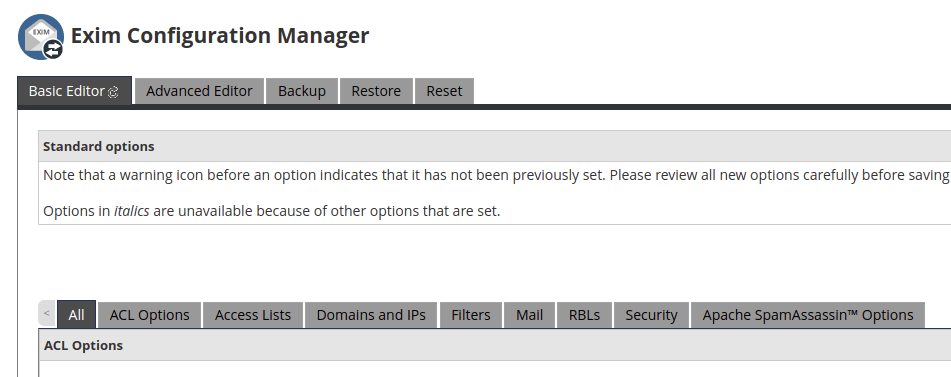
Under Home >> Email, we also have the following options:
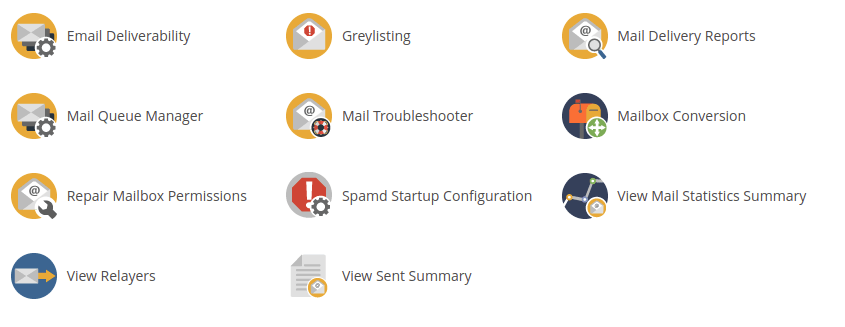
Virus Scanning
Both InterWorx and cPanel utilize clamd as the default virus checking software of choice for the server.
InterWorx
In the Virus Filtering interface, we see the normal functions available for scanning, starting, restarting and stopping ClamAV. We also see the start on boot and auto-start options.

In the virus definition control area, we have the ability to check the status of Freshclam, start, restart and stop the service. Below that, we see the Virus Definition Information which is kept updated and displayed.

WHM
ClamAV is also installed by default and the global configuration options can be found under Home >> Plugins >> Configure ClamAV Scanner.

Under that, we can configure ClamAV Scanner for the individual user's preferences.

Mail Queue
InterWorx
Below we see the Mail Queue quick stats, message counts and send a test message. Also, if QMail seems to not be processing emails on its own, there is a button to manually force a QMail process run.

Next to the above section, we see the Mail Queue observed graph where we can visualize the queue.
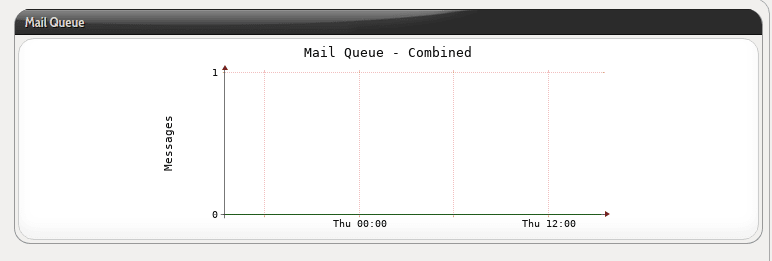
WHM Mail Queue
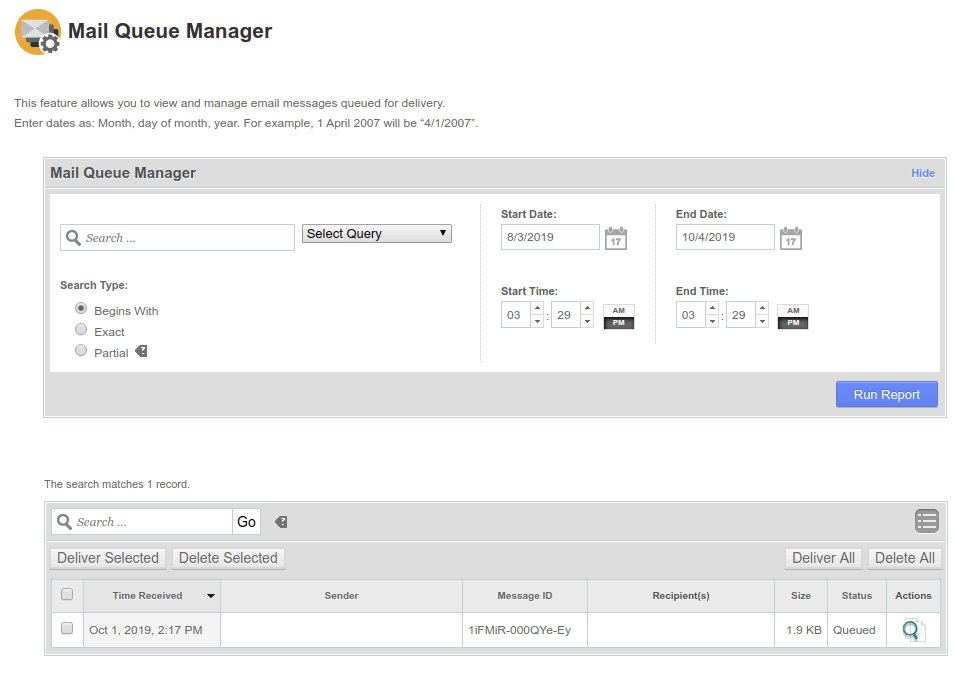
WHM’s Mail Queue Manager provides the ability to search via multiple methods, times, and dates. To quote cPanel, “This feature allows you to view and manage email messages queued for delivery. Enter dates as Month, day of the month, year. For example, 1 April 2007 will be “4/1/2007”.
Conclusion
This concludes the second part of our series on InterWorx vs. cPanel. This article covered the Web Server, FTP Server, SSH Server, and lastly the Mail Server settings. Next, we will be reviewing MySQL Server, DNS Server, NFS Server and the standard plugins like CSF that are included with each platform. Read on in Part Three!
Learn More!
Our Support Teams are standing by with knowledgeable admins with an intimate knowledge of these and other web hosting technologies, especially those discussed in this article.
Related Articles:

About the Author: David Singer
I am a g33k, Linux blogger, developer, student, and former Tech Writer for Liquidweb.com. My passion for all things tech drives my hunt for all the coolz. I often need a vacation after I get back from vacation....
Our Sales and Support teams are available 24 hours by phone or e-mail to assist.
Latest Articles
In-place CentOS 7 upgrades
Read ArticleHow to use kill commands in Linux
Read ArticleChange cPanel password from WebHost Manager (WHM)
Read ArticleChange cPanel password from WebHost Manager (WHM)
Read ArticleChange the root password in WebHost Manager (WHM)
Read Article


